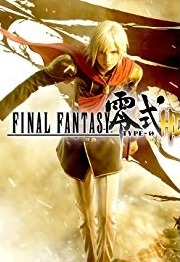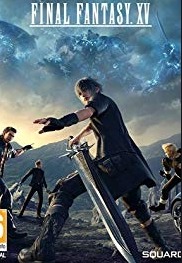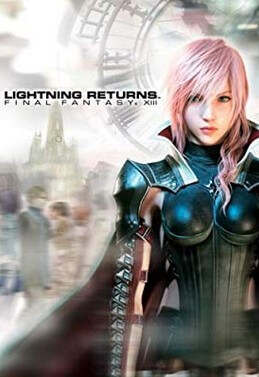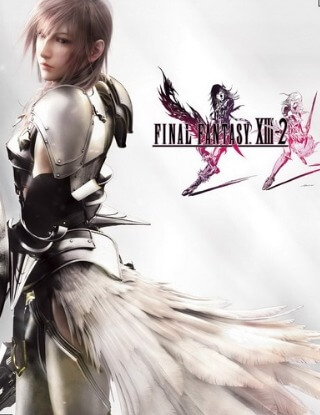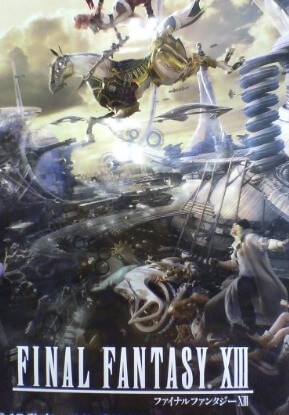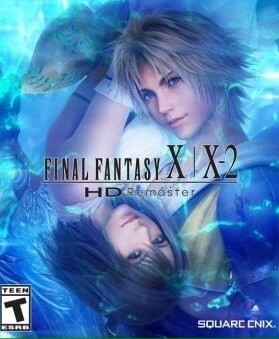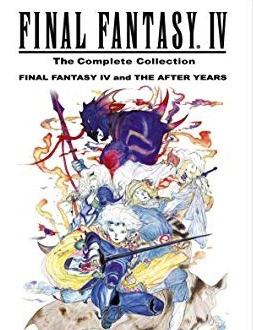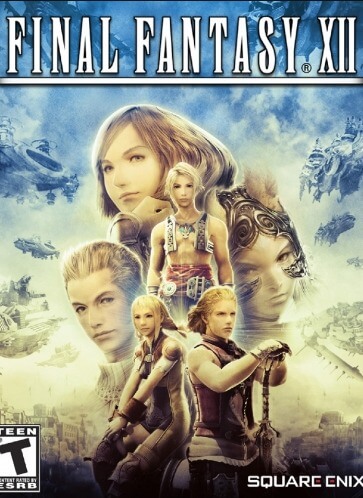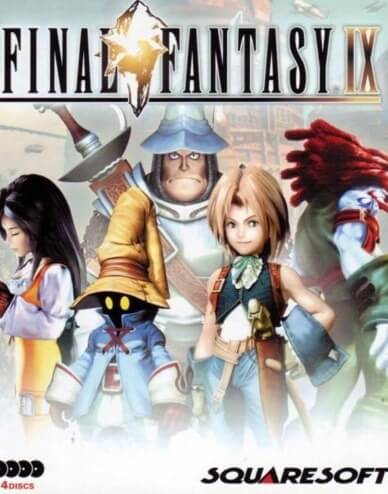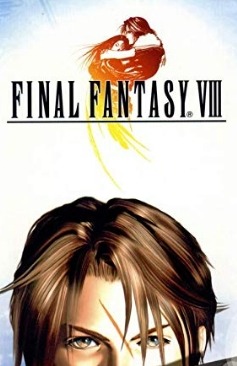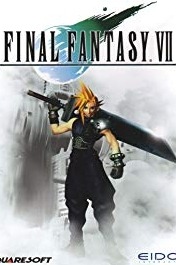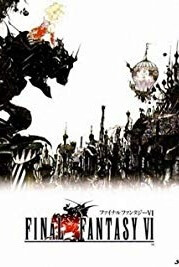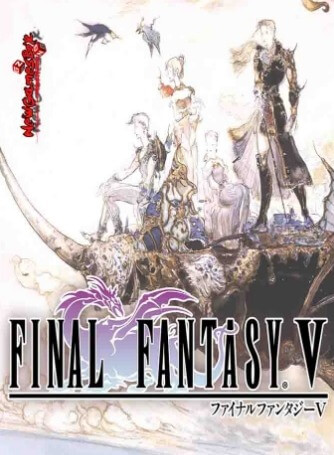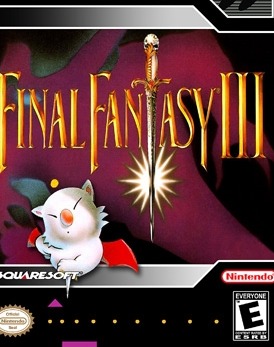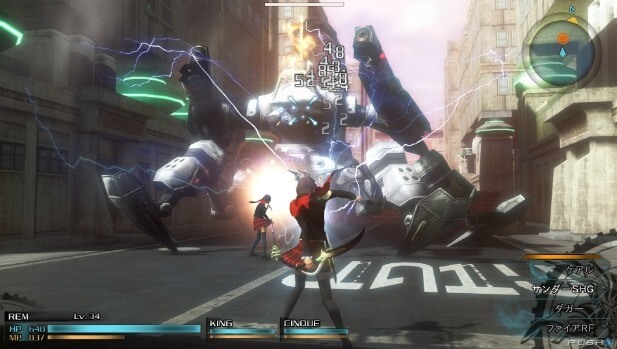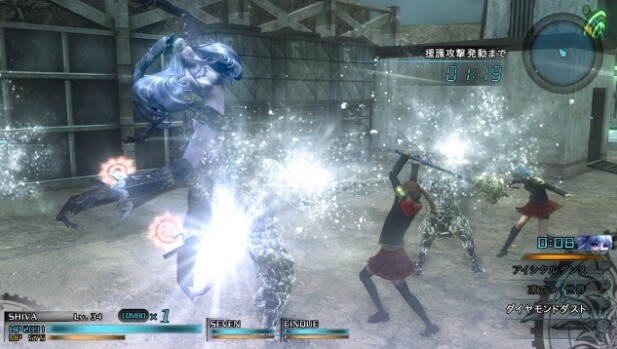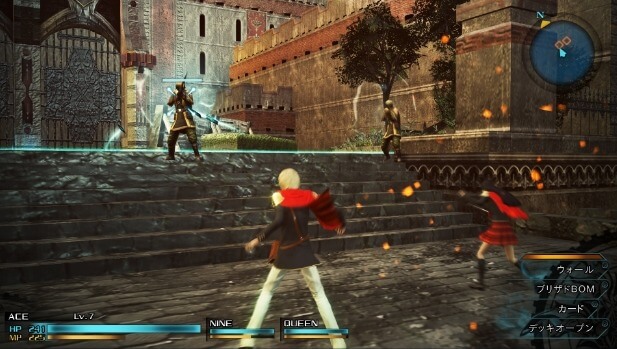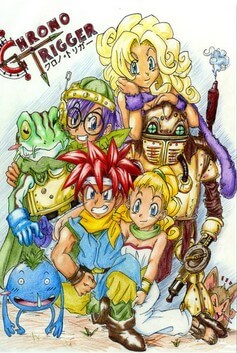Final Fantasy Type-0 HD (Japanese: ファイナルファンタジー零式 HD Hepburn: Fainaru Fantajī Reishiki HD) is an action role-playing game developed by Square Enix and HexaDrive, and published by Square Enix for PlayStation 4 and Xbox One, and later for Microsoft Windows via Steam. It was released worldwide in March 2015, while the Steam port was released in August 2015. Type-0 HD is a high-definition remaster of the Japan-exclusive PlayStation Portable game Final Fantasy Type-0, a spin-off from the main Final Fantasy series and part of the Fabula Nova Crystallis subseries, a set of games sharing a common mythos. The story focuses on Class Zero, a group of fourteen students from the Dominion of Rubrum who must fight the neighboring Militesi Empire when they launch an assault on the other Crystal States of Orience. In doing so, the group become entangled in both the efforts to push back and defeat the forces of Militesi, and the secret behind the war and the existence of the crystals.
After Type-0 received a 2011 Japan-only release on PSP, Type-0 HD began development in mid-2012 as part of a move to promote the next generation of gaming consoles, and gave the opportunity for multiple changes to refine the experience for players. Outside of updated graphics and an expanded color palette, Type-0 HD is largely identical to the original PSP version, although the original's multiplayer functionality was dropped, and additional difficulty levels were implemented. Type-0 HD reached high positions in international sales charts, and has sold over one million copies worldwide as of October 2015. It received praise for its story and battle system, while criticisms have focused on its HD upgrade and localization.
Gameplay
Final Fantasy Type-0 HD is an action role-playing video game that utilizes a real-time battle system similar to Crisis Core: Final Fantasy VII. The player controls Class Zero, an elite fighting force of fourteen students from Rubrum's Akademeia. Outside mission environments and Akademeia (Class Zero's home base), Class Zero navigates Orience through a scaled-down world map. The world can be navigated on foot, using chocobos (recurring galliform birds in the Final Fantasy series) or via an airship. Type-0 HD is split into missions with free periods in between. During these free periods between missions, players can explore Akademeia, breed chocobos for personal use, and complete side quests for characters in Akademeia and liberated towns.
During missions, three members of Class Zero can be selected for missions while the others are kept in reserve in case a player character dies. The lead character can be swapped at any time, with the other two being controlled by the game's artificial intelligence. During certain story missions, players take part in real-time strategy battles on the world map. During combat missions, players gain experience points and increase their experience level as they defeat enemies, as well as obtaining Phantoma from defeated enemies, used to upgrade the characters' magic skills. Each character has access to summoned monsters called Eidolons (War Gods (軍神 Gunshin) in the original Japanese), which are summoned for limited periods at the cost of a character's total health.
While the core gameplay remains the same, multiple adjustments were made to existing systems. The HD version features four difficulty levels as opposed to the original's three, including an "easy" option. The original game's multiplayer elements were removed during optimization for consoles, and types of magic and accessories previously only available in multiplayer were incorporated into the single-player campaign. A feature unique to Type-0 HD is the support personnel (SP) system: when activated, AI-controlled support characters take the place of normal party members. SP points earned in battle can be used to purchase special items. Additional character costumes made included through the original's demos and downloadable content were included in Type-0 HD as unlockables, along with costumes unique to the HD version.
Development
During the production of Final Fantasy Type-0, the development team explored the possibility of a high-definition port of the game. The idea never went beyond experimentation as the team was focused on keeping the game as a portable experience. The team also experimented with a sequel on eighth generation consoles, but production was halted when the development team were transferred to Final Fantasy XV. After some time working on XV, original director Hajime Tabata decided to develop Type-0 HD for eighth-generation consoles. The game began development in mid-2012, around the same time XV was shifted onto PlayStation 4 (PS4) and Xbox One. Tabata came on board in July of that year as director and producer, though his involvement was fairly minor due to his directing duties for XV. The main development was handled by HexaDrive, who had previously collaborated successfully with Square Enix on The 3rd Birthday, and had developed the high-definition remasters of Ōkami and The Legend of Zelda: The Wind Waker. The remaster was intended as an incentive for Final Fantasy players in both Japan and the west to purchase eighth generation consoles before XV's release. The original plan was for a port to both the seventh generation PlayStation 3 and Xbox 360 consoles, and eighth generation consoles. After the PS4 proved popular at the 2013 Tokyo Game Show, and as Tabata had no development experience with seventh generation console hardware, the team focused on the eighth generation versions. According to art director Yusuke Naora, moving from the PlayStation Portable to eighth-generation hardware proved hard for the team. Despite early claims, no version of Type-0 HD was developed for the PlayStation Vita. According to Tabata, this was due to difficulties in porting between console and Vita development environments, and his wish for a playing experience he could only envision on home consoles.
HexaDrive handled the 2D screen displays, world map features and lip synching, while Square Enix handled the 3D graphics, such as character models in cutscenes. Lighting effects and in-game assets were improved and updated for HD consoles using the DirectX 11 technology utilized for XV. Alongside this, a large proportion of the upgrade was done using HexaDrive's in-house engine HexaDrive Engine 2.0. While originally meant to have a cursory role compared to the DirectX 11 elements, it ended up being used far more than anticipated. The resolution was increased from the original game's 480x272 pixels to the 1920x1080 required. Despite all these changes, the team took care that the lighting and shadow effects remained faithful to the look of the original, as updating too much of the game's visual style would fundamentally alter the experience. Due to scheduling, there was sometimes pressure on the HexaDrive team and they experienced difficulties with the hardware as it was their first time developing for eighth-generation consoles. Updating the lighting effects alone took a whole year of development to finish. While updating the characters' appearance, the team were forced to focus on the main characters due to production deadlines, consequently doing less work on NPCs such as Kurasame. For the main characters' gameplay models, the team adapted the models used in the original cutscenes, as they were more detailed than the original gameplay models due to a higher polygon count. Tabata wanted the main characters to remain as true as possible to their original appearances, but due to the cutscene models appearing older than the original gameplay models, they needed adjusting so they better reflected the original models. The team also adjusted the characters' appearances slightly to make them more "charming". Visual optimization was still going on during the game's reveal, with the team needing to create special screenshots of Type-0's characters operating inside the production environments of XV. Ultimately, these visuals gave the team a guide for what the final game should look like, reducing the amount of trial and error.
